Constant returns to scale is the situation when you employ some amount of input that gives the same amount of output. A constant returns to scale means that the proportionate increase in input is exactly equal to the increase in output.
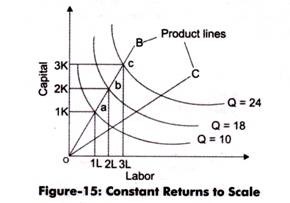
Law Of Return To Scale And It S Types With Diagram
A larger-scale firm can produce at a lower cost than a smaller-scale firm.

. The term constant returns to scale describes a situation where A. Expanding all inputs changes the average cost of production. A larger-scale firm can produce at a lower cost than a smaller-scale firm.
A larger-scale firm can produce at a lower cost than a smaller-scale firm. Produces and sells kiTchen wares. Question 5 3 out of 3 points constant returns to.
Expanding all inputs does not change the average cost of production. Question 1 4 out of 4 points Constant returns to scale describes a situation where. LasT year iT produced 7000 can openers and sold eachone for 6.
A larger-scale firm can produce at a lower cost than a smaller-scale firm. The term constant returns to scale describes a situation whereA. Q 5 Km Lm 5KLm 2 Q m 2.
Expanding all inputs does not change the average cost of production. The term constant returns to scale describes a situation where a. A larger-scale firm can produce at a lower cost than a smaller-scale firm.
Expanding all inputs does not change the average cost of production. Question 14 5 pts The term constant returns to scale describes a situation where expanding all inputs does not change the average cost of production. Expanding all inputs changes the average cost of production by a lower percentage.
The term constant returns to scale describes a situation where. A larger-scale firm can produce at a lower cost than a smaller-scale firm. Expanding all inputs changes the average cost of production.
The term constant returns to scale describes a situation where expanding all inputs does not change the average cost of production. In Barrys case the 25 increase in input would result in a 25 increase output. 1 Answer to The term constant returns to scale describes a situation where a.
In the US economy nearly half of all the workers employed by private firms work at. This means your company is efficient and earning more profit which is a common objective of any firm. A larger-scale firm can produce at a.
Expanding all inputs does not change the average cost of production. The quantity of output rises and the average cost of production falls. A larger-scale firm can produce at a lower cost than a smaller-scale firm.
Expanding all inputs changes the average cost of production. The quantity of output rises and the average cost of production falls. Question 5 3 out of 3 points Constant returns to scale describes a situation where.
Expanding inputs by 15 yields an average output of 15. Since m 1 then m 2 m. It means you are already employing a sufficient amount of inputs that your production is large and you are producing at a low cost.
The term constant returns to scale describes a situation where expanding all inputs does not change the average cost of production. Constant returns to scale or constant cost refers to the production situation in which output increases exactly in the same proportion in which factors of production are increased. The quantity of output rises and the average cost of production falls.
Question 14 5 pts The term constant returns to scale describes a situation where expanding all inputs does not change the average cost of production. Expanding all inputs does not change the average cost of production. Expanding all inputs changes the average cost of production by a lower percentage.
Expanding all inputs changes the average cost of production by a lower percentage. Expanding all inputs changes the average cost of production. Again we increase both K and L by m and create a new production function.
The term constant returns to scale describes a situation where A larger scale firm can produce at a lower cost than a smaller-scale firm Expanding all inputs changes the. The quantity of output rises and the average cost of production. __________ include all spending on labor machinery tools and suppliespurchased From other frms.
In other words if a firm. A larger-scale firm can produce at a lower cost than a smaller-scale firm. The term constant returns to scale describes a situation where A.
Expanding inputs by 15 yields an average output of 15. A larger-scale firm can produce at a lower cost than a smaller-scale firm. In economic terms constant returns to scale is when a firm changes their inputs resources with the results being exactly the same change in outputs production.
Expanding inputs by 15 yields an average output of 15. Our new production has increased by more than m so we have increasing returns to scale. As a result we have constant returns to scale.
Again we increase both K and L by m and. O the quantity of output rises and the average cost of production falls. In simple terms if factors of production are doubled output will also be doubled.
Expanding all inputs changes the average cost of production. The term constant returns to scale describes a situation where A. Expanding all inputs does not change the average cost of production.

Law Of Returns To Scale Definition Explanation And Its Types
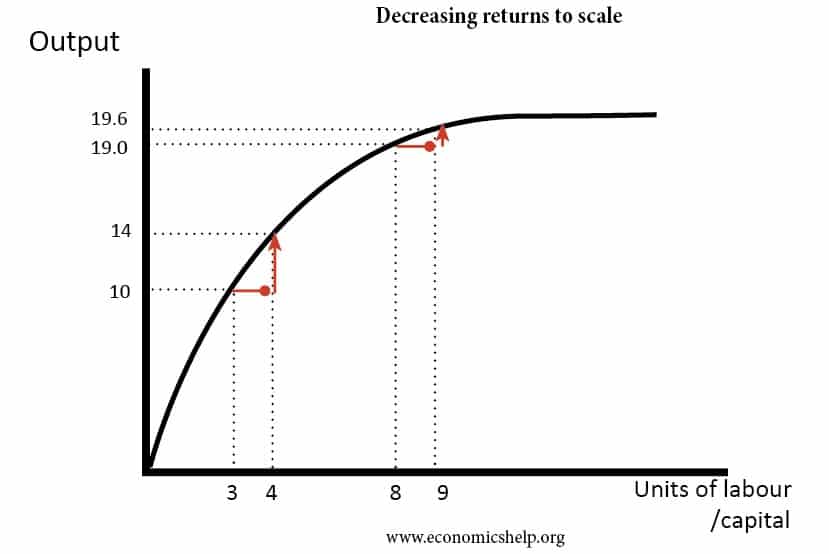
Constant Returns To Scale Economics Help
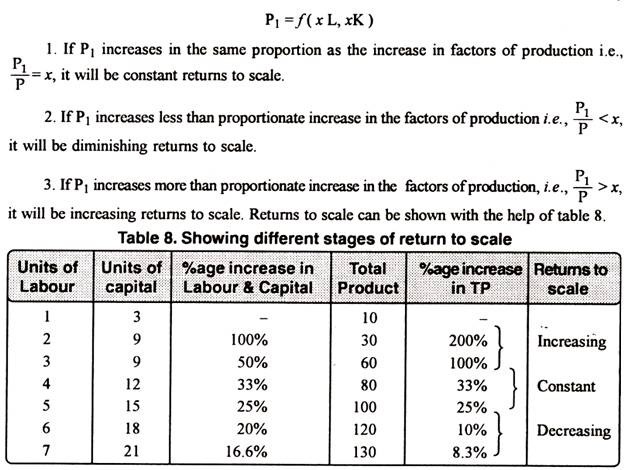
Law Of Returns To Scale Definition Explanation And Its Types
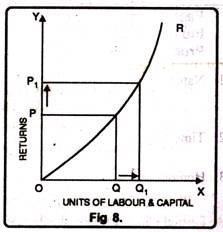
Law Of Returns To Scale Definition Explanation And Its Types
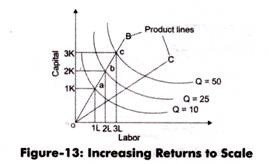
Law Of Return To Scale And It S Types With Diagram

Constant Returns To Scale Intelligent Economist
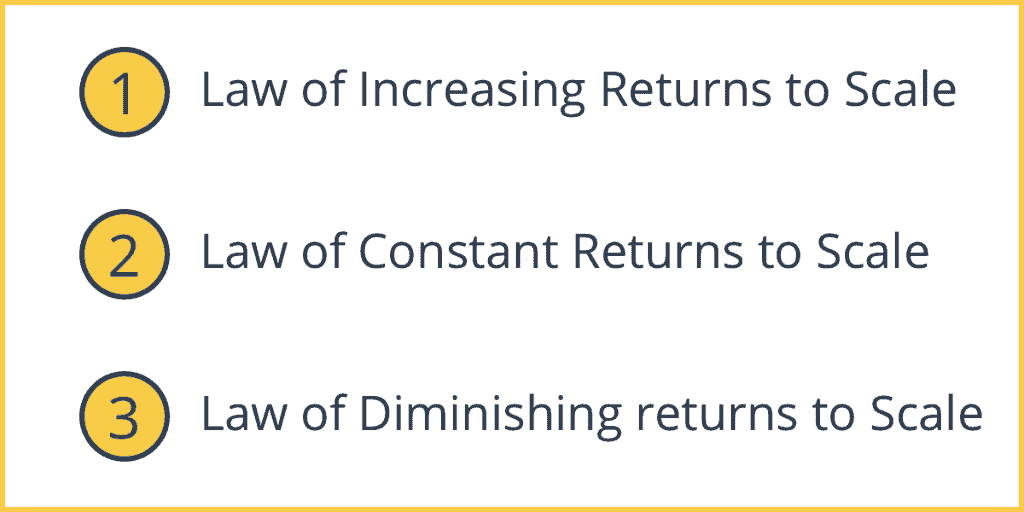
Constant Returns To Scale Intelligent Economist
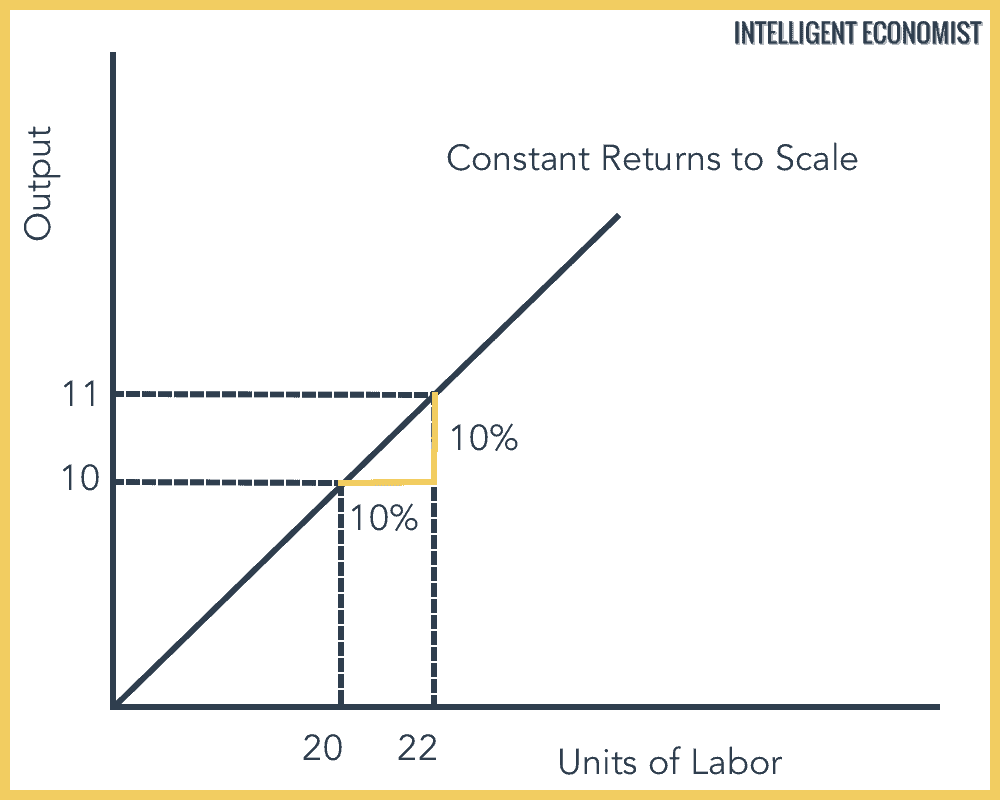
0 Comments